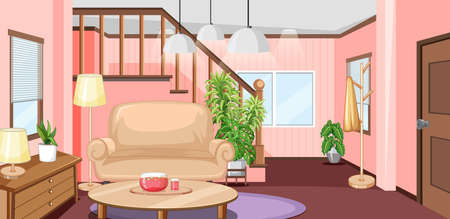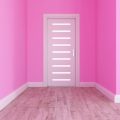Feng Shui Foundations for Apartment Living
Living in an apartment doesn’t mean you have to sacrifice positive energy or a harmonious home. Feng Shui, the ancient Chinese art of arranging your living space for optimal energy flow, can easily be adapted to American apartment life. Whether you’re in a cozy studio or a multi-bedroom unit, understanding the basics of Feng Shui will help you create a calm and welcoming environment.
What is Feng Shui?
Feng Shui (pronounced “fung shway”) is all about balancing energies—called “chi”—in your home to promote health, happiness, and prosperity. The goal is to arrange furniture and décor so that energy can move freely, avoiding cluttered or blocked spaces that can cause stress or stagnation.
The Bagua Map: Your Feng Shui Blueprint
The Bagua map is one of the most important tools in Feng Shui. This octagonal grid overlays your floor plan and divides it into nine life areas, such as Career, Relationships, Wealth, and Health. Here’s how you can use it even in compact apartments:
| Bagua Area | Location (from entry door) | Focus |
|---|---|---|
| Career | Front center | Job & Life Path |
| Knowledge & Wisdom | Front left | Learning & Growth |
| Family | Middle left | Family & Health |
| Wealth | Back left | Prosperity |
| Fame & Reputation | Back center | Recognition |
| Love & Relationships | Back right | Romance & Partnerships |
| Creativity & Children | Middle right | Projects & Kids |
| Helpful People & Travel | Front right | Mentors & Journeys |
| Health (Center) | Center of Home | Total Well-being |
How to Apply the Bagua Map in Apartments:
- Stand at your main entrance door looking inside. Imagine placing the Bagua map over your entire apartment layout.
- If you have a small space, you can also apply the map to just one room—great for studios!
- No need for perfection—focus on making each area tidy and inviting.
Energy Flow: Making It Work in Compact Spaces
Apartments often come with unique challenges like limited square footage, shared walls, or awkward layouts. Don’t worry! Here are some simple tips to optimize energy flow:
- Avoid blocking walkways with furniture—keep pathways clear from the front door inward.
- Add mirrors strategically to reflect light and expand cramped spaces.
- Keeps windows clean and open when possible for fresh air and natural light.
- If storage is tight, regularly declutter to prevent stagnant chi.
- Select multi-functional furniture to maximize open space and minimize clutter.
A Quick Feng Shui Checklist for Apartment Dwellers:
- Tidy up entryway—this is where energy enters your home.
- Add plants for freshness and vibrant chi.
- Avoid sharp corners facing sitting or sleeping areas—they create harsh energy called “sha chi.” Soften with fabric or rounded objects if needed.
- Create a sense of separation between work and relaxation zones, even with rugs or screens in open-plan layouts.
This foundation will help you get started on bringing harmony into every room of your apartment. In the next section, we’ll explore practical Feng Shui tips for specific rooms!
2. Optimizing the Entryway
Creating a Welcoming First Impression
The entryway is the gateway for energy, or chi, to enter your apartment. In American apartments, foyers can be small or even just a doorway, but you can still use Feng Shui to make this area feel inviting and positive.
Tips for Enhancing Curb Appeal
| Tip | Description |
|---|---|
| Keep It Clean | Sweep the front door area and remove any clutter, shoes, or trash regularly. A tidy entry lets good energy in. |
| Add a Welcome Mat | Choose a cheerful, clean mat with a positive message or simple design to invite guests (and chi) inside. |
| Use Lighting | A well-lit entry feels safe and welcoming. Consider battery-operated lights if outlets are scarce. |
| Decorate Seasonally | Add a small wreath, potted plant, or seasonal decor to personalize the space without overcrowding it. |
Decluttering the Foyer Space
A clutter-free entryway allows energy to flow smoothly into your home. Even if your foyer is just a few square feet inside the door, try these steps:
- Install wall hooks or a slim coat rack for jackets and bags.
- Use a small shoe rack or basket to keep footwear organized and off the floor.
- Add a small tray or bowl on a shelf for keys and loose change.
Using Mirrors and Decor to Attract Positive Energy
Mirrors are powerful in Feng Shui but need to be placed thoughtfully:
- Avoid placing mirrors directly facing the door. This can reflect energy back outside rather than letting it enter your home.
- Hang mirrors on side walls. This expands space visually and enhances light without blocking chi flow.
- Select uplifting artwork or photos. Choose images that make you smile—nature scenes, family photos, or inspiring quotes work well in American homes.
- Add plants if space allows. A small snake plant or pothos adds life and fresh energy even in tight spots.
Quick Feng Shui Entryway Checklist
| Item | Status (Check!) |
|---|---|
| Clean doormat & entry area | ✓ |
| No clutter near the door | ✓ |
| Pleasant lighting installed | ✓ |
| Mirror not directly opposite door | ✓ |
| Welcoming decor/plants added | ✓ |
With these easy tips, you can turn even the smallest American apartment foyer into an inviting space that welcomes both guests and good fortune into your home.

3. Living Room Harmony
Arranging Furniture for Positive Energy Flow
The living room is the heart of your apartment, where friends and family gather, relax, and connect. According to Feng Shui, arranging furniture thoughtfully helps energy (or chi) move freely and fosters harmony. Start by placing your main seating—like a sofa—against a solid wall, facing the entryway if possible. This “command position” creates a sense of security and welcomes good energy. Avoid blocking windows or doors with large furniture pieces; this can block positive chi from circulating.
| Furniture Placement Tip | Feng Shui Benefit |
|---|---|
| Sofa against a solid wall | Supports stability and protection |
| Circular arrangement of seats | Encourages conversation and connection |
| Avoiding clutter near pathways | Allows free movement of energy |
| Side tables beside seating | Adds balance and convenience |
Incorporating Color for Mood and Balance
Color plays a powerful role in setting the vibe of your living room. In American apartments, neutrals like beige, gray, or soft white offer a calm foundation, while pops of color can uplift the space. In Feng Shui:
- Earth tones (beige, tan): Encourage grounding and comfort.
- Blues and greens: Promote relaxation and calm communication.
- Pops of red or orange: Add warmth and energy for social gatherings.
- Metallic accents (gold, silver): Bring clarity and a modern touch.
Selecting Art to Inspire Connection & Relaxation
The artwork you choose can influence the mood in your living room. Look for images that evoke positive feelings—landscapes, abstract art in soothing colors, or uplifting quotes. Avoid art depicting loneliness or conflict. Hang art at eye level to keep energy balanced throughout the room.
Artwork Ideas for Apartment Living Rooms:
- Nature scenes to invite tranquility.
- Family or group portraits to encourage togetherness.
- Abstract patterns in harmonious colors for creativity.
- Avoid sharp or aggressive imagery that might create tension.
Feng Shui Tips for Open-Plan vs Traditional Living Rooms
| Room Layout Type | Key Feng Shui Strategy | Quick Tip |
|---|---|---|
| Open-Plan Living Room | Create zones using area rugs or plants to define spaces without blocking flow. | Use bookshelves as subtle dividers without closing off energy. |
| Traditional Separate Living Room | Keep pathways clear from the door to seating areas; avoid heavy furniture by the entrance. | Add mirrors to reflect light and expand energy in smaller rooms. |
Your Cozy Feng Shui Living Room Awaits!
With these simple strategies—thoughtful furniture placement, mindful color choices, and meaningful art—you can transform any apartment living room into a welcoming space where positive chi flows and everyone feels at home.
4. Kitchen and Dining Area Balance
Feng Shui Tips for Energizing Your Kitchen and Dining Spaces
The kitchen is often called the heart of the home, especially in American apartments where open layouts connect the kitchen and dining areas to living spaces. In Feng Shui, these areas are vital for nourishing your health, family harmony, and abundance. Here’s how you can maximize positive energy in your kitchen and dining area, even in a compact apartment.
Appliance Placement: Where Function Meets Flow
| Appliance | Feng Shui Tip |
|---|---|
| Stove | Place the stove so you can see the entry while cooking (use a mirror if needed). Avoid positioning it directly across from the sink or fridge to balance fire and water energies. |
| Refrigerator | Keep it clean inside and out. Place it away from the stove when possible to reduce elemental conflict between fire (stove) and water (fridge). |
| Sink | Avoid having the sink next to or directly facing the stove. This helps maintain harmony between water and fire elements. |
| Microwave & Small Appliances | Store them neatly; avoid cluttered countertops to allow energy (chi) to circulate freely. |
Using Natural Elements for Balance and Harmony
Bringing natural elements into your kitchen and dining space helps create a warm, welcoming atmosphere. According to Feng Shui principles, each element supports different aspects of well-being:
| Element | How to Incorporate | Benefits |
|---|---|---|
| Wood | Add wooden utensils, cutting boards, or a bowl of fresh fruit. | Nourishment, growth, vitality. |
| Fire | Candles, red or orange accents, or even the act of cooking itself. | Energy, transformation, warmth. |
| Earth | Ceramic dishes, stone countertops, potted herbs. | Stability, grounding, support. |
| Metal | Stainless steel appliances or metallic fixtures. | Clarity, precision, efficiency. |
| Water | A small plant near the sink or blue décor items. | Flow, flexibility, calmness. |
Nourishment and Abundance Practices for Everyday Living
- Keep It Clean: Wipe down counters regularly and empty trash promptly—cleanliness invites positive chi and prosperity.
- Dine Together: Even if schedules are tight, try to share meals at the table. This builds family bonds and amplifies good energy.
- Add Life: Fresh flowers or a bowl of colorful fruits on the dining table symbolize abundance and attract good fortune.
- Sensible Lighting: Use bright but warm lighting in both kitchen and dining areas; avoid harsh overhead lights when possible. Dimmer switches work great!
5. Cultivating Restful Bedrooms
Creating a Peaceful Bedroom Retreat
Your bedroom should be a sanctuary for relaxation and connection. In American apartments, bedrooms are often compact but can still be optimized with Feng Shui principles to promote better sleep and harmonious relationships.
Tips for Bedroom Layout
- Keep It Simple: Avoid clutter by limiting furniture to essentials like the bed, nightstands, and perhaps a dresser.
- Clear Pathways: Ensure there is enough space to walk around the bed without bumping into furniture. This allows energy (chi) to flow freely.
- No Work Zones: Keep desks and exercise equipment out of the bedroom if possible. If you must have them, try to separate them visually with a screen or shelf.
Bed Placement for Better Sleep
| Feng Shui Principle | How to Apply in an Apartment Bedroom |
|---|---|
| Command Position | Place your bed so you can see the door while lying down, but not directly in line with it. If this isn’t possible, use a mirror to reflect the door from your bed. |
| Avoid Under Windows | If possible, don’t place the bed directly under a window as it can disrupt restful sleep. Use heavy curtains if this is unavoidable. |
| Solid Headboard | Choose a sturdy headboard against a solid wall to provide support and security. |
| No Mirrors Facing Bed | Avoid mirrors that reflect the bed, which can disturb your rest according to Feng Shui beliefs. |
Decor That Encourages Restful Sleep and Harmony
- Soothing Colors: Opt for soft, calming tones like light blues, greens, or neutrals on walls and bedding.
- Matching Nightstands: Place matching nightstands on each side of the bed for balance—great for couples or those seeking partnership harmony.
- Soft Lighting: Use lamps with warm bulbs instead of harsh overhead lights to create a cozy atmosphere.
- No Electronics: Keep TVs and phones away from the sleeping area or turn them off at night to reduce distractions.
- Add Natural Elements: Incorporate plants (like snake plants or peace lilies) for fresh air and gentle energy, but avoid placing too many close to your head while sleeping.
- Personal Touches: Display photos or artwork that make you feel happy and relaxed, avoiding images that evoke stress or sadness.
Quick Reference: Bedroom Feng Shui Dos & Don’ts
| Do | Don’t |
|---|---|
| Use soft colors and gentle lighting | Pile up clutter or dirty laundry in corners |
| Choose supportive headboards and balanced bedside tables | Place your bed directly under a window if avoidable |
| Add calming decor and natural touches | Hang mirrors facing the bed |
If you apply these simple Feng Shui tips in your apartment bedroom, you’ll create a space that feels restful at night and energizing in the morning—perfect for busy American lifestyles.


